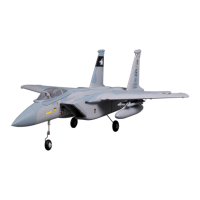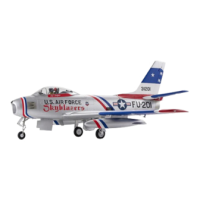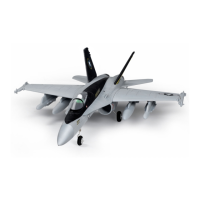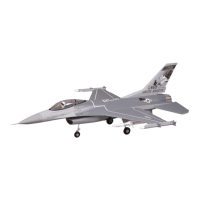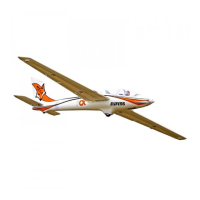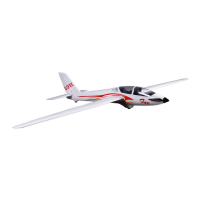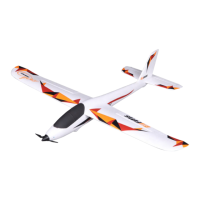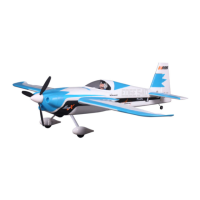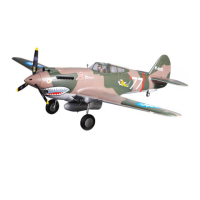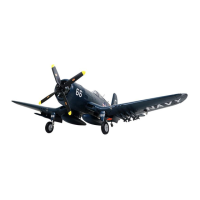Do you have a question about the FMS F-35 lightning V2 and is the answer not in the manual?
User responsibility, age recommendation, safe operating practices, and handling precautions.
Guidelines for safe handling, charging, storage, and use of Li-Po batteries.
Introduction to the upgraded 64mm ducted fan aircraft, highlighting its features.
Details specific improvements and key features of the F-35 V2 model.
Comprehensive specifications including dimensions, weight, motor, ESC, and servos.
Visual guide to all kit components, emphasizing pre-assembly inspection.
Instructions for inserting the wing tube and attaching the main wings to the fuselage.
Procedure for gluing the horizontal stabilizer into the rear fuselage slot.
Steps for gluing the vertical tail into place, noting its outward angle.
Instructions for attaching the nose cone and the main landing gear using screws.
Guidance on attaching the clevis to the control linkage for proper movement.
Applying hook tape to the battery and securing it for correct Center of Gravity.
Diagram showing how to connect control surfaces (aileron, elevator, etc.) to the receiver.
Information on ESC safe start, motor rotation, and brake settings.
Steps for binding receiver, checking control surface neutral positions and movement.
Details recommended dual rate settings (high/low) for elevator and aileron throws.
Detailed steps for pulling, spreading, and securing the clevis to the control horn.
Overview of factory settings for control horns/servo arms and options for adjusting control response.
Recommended CG range (93-98mm from leading edge) and method for balancing the model.
Advice on choosing a safe and clear open area for flying the model.
Importance and procedure for a ground range test to ensure radio system integrity.
Tips on using a timer and landing when battery power is low.
Steps for a smooth take-off, accelerating and climbing at a steady rate.
Guidance on choosing flying sites and performing maneuvers after gaining altitude.
Instructions for landing the model, managing throttle and flare.
Advice on foam repairs, adhesive types, and checking key components before flight.
Table detailing issues like unresponsive controls, motor noise, and power loss with their causes and fixes.
List of all available spare parts with their corresponding part numbers for ordering.
Guidelines for connecting the ESC to the motor and battery, and to the receiver.
Explanation of audible tones and available functions for configuring the ESC settings.
| Brand | FMS |
|---|---|
| Model | F-35 Lightning V2 |
| Category | Toy |
| Material | EPO Foam |
| Flying Weight | 1150g |
| EDF Diameter | 70mm |
| Charger | Not included |
| Recommended Skill Level | Intermediate |
| Assembly Required | Yes |
| Color | Gray |
| Servos | 9g Servo x 4 |
| Recommended Battery | 14.8V 2200mAh 4S LiPo |
